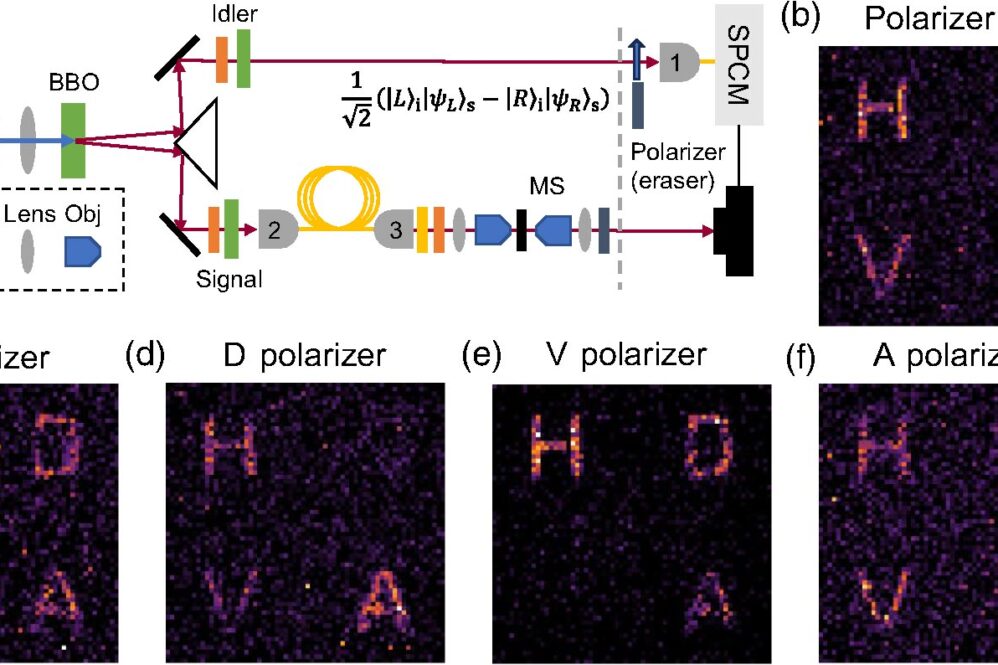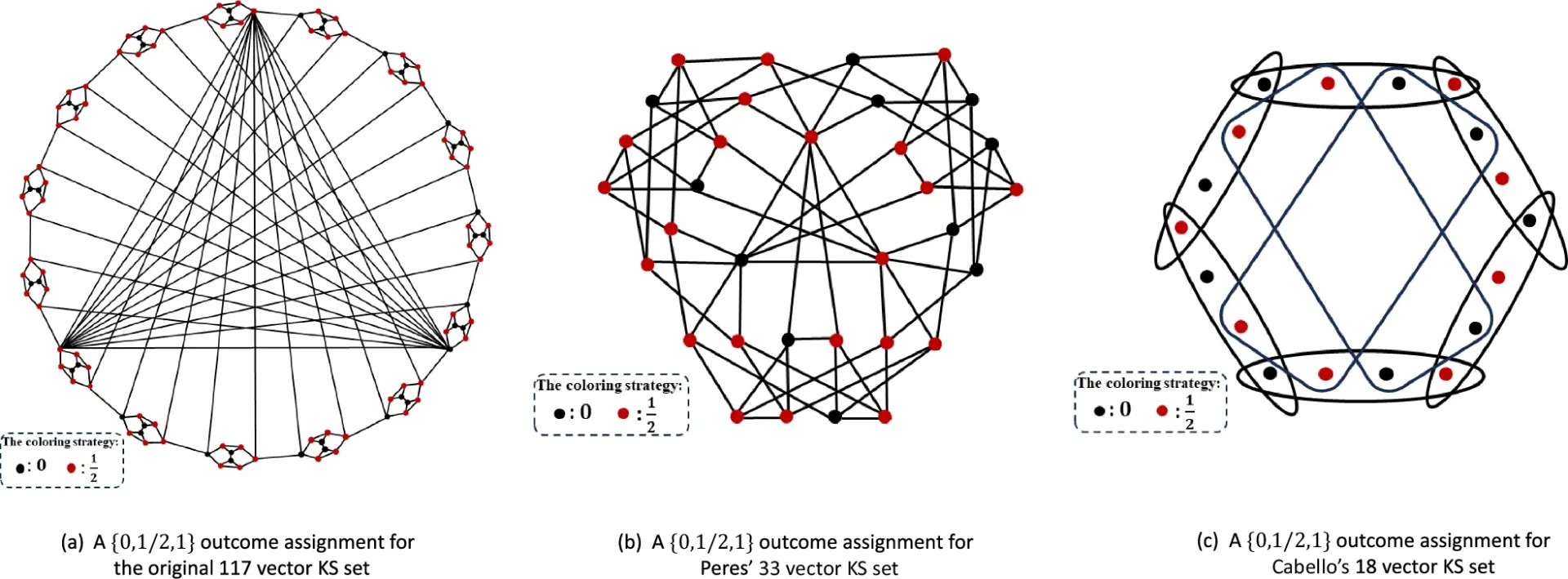Scientists have achieved a remarkable breakthrough in quantum physics by successfully creating quantum holograms using metasurfaces, taking quantum entanglement to unprecedented levels of sophistication and control. This innovation represents a significant advancement in how quantum information can be encoded, manipulated, and secured.
At the core of this research is the unique ability to generate polarization-hologram hybrid entanglement between photon pairs. In this quantum system, the polarization state of one photon (idler) becomes entangled with the holographic information carried by its partner photon (signal). This creates a fascinating phenomenon where measuring the polarization of the idler photon instantaneously affects the holographic state of the signal photon, regardless of the distance separating them.
The researchers demonstrated this principle by creating holograms of four letters — “H,” “V,” “D,” and “A” — entangled with specific polarization states. By manipulating the polarization of the idler photon, they could selectively erase particular letters in the hologram, showcasing precise quantum control over complex visual information.
This work also represents a novel implementation of the quantum eraser concept. When the idler photon’s polarization is measured in a specific way, it acts as a “path marker,” revealing which holographic path the signal photon took and preventing interference. However, inserting a polarizer in the idler path “erases” this path information, restoring interference between holographic states and allowing selective content erasure.
The practical applications of this technology are substantial. For quantum communication, the ability to encode information in both polarization states and holographic patterns could significantly enhance data capacity and security for quantum key distribution. In anti-counterfeiting, the intricate relationship between polarization states and holographic content creates security features that would be extraordinarily difficult to replicate.
Perhaps most significantly, this research demonstrates how modern nanofabrication can harness quantum effects for practical applications. Despite their ultrathin nature, metasurfaces enable complex quantum operations that traditionally required elaborate optical setups, bridging the gap between fundamental quantum mechanics and real-world technologies.
By expanding quantum entanglement to incorporate spatial holograms, this work opens new avenues for quantum information processing while providing a visually intuitive platform for exploring fundamental quantum concepts of entanglement and nonlocality.
Reference: “Metasurface-enabled quantum holograms with hybrid entanglement” by Hong Liang, Wai Chun Wong, Tailin An and Jensen Li, 11 March 2025, Advanced Photonics. DOI: 10.1117/1.AP.7.2.026006


